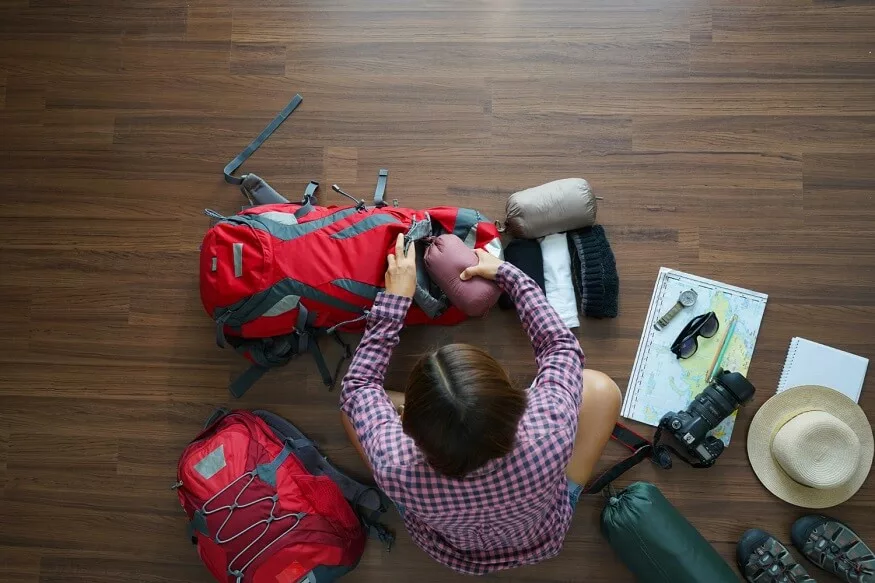Venturing into the woods promises an exhilarating adventure, but safety must always take precedence. Whether you’re a seasoned outdoor enthusiast or a novice explorer, the mastery of essential wilderness survival techniques can dramatically improve your capacity to thrive in nature while safeguarding yourself. In this comprehensive guide, we will explore five pivotal safety principles and bestow upon you a wealth of wilderness survival knowledge, empowering you not only to endure but to fully embrace the splendor of the natural world.
Safety Principle 1: Thorough Preparation and Meticulous Planning
Before embarking on any wilderness adventure, the first and foremost step that warrants your utmost attention is meticulous preparation and planning. It’s a universal truth that failing to prepare essentially amounts to preparing to fail. Here are some key steps to survive in the wild:
- Thorough Research: The foundation of your wilderness adventure should be a solid base of information about your chosen wilderness area. Delve into the details regarding the terrain, prevailing weather conditions, and potential hazards that you might encounter.
- Communication is Key: Ensure that you promptly inform a trusted friend or family member of your expedition plans, including precise details about your destination and your anticipated return time. This prudent step ensures that someone can swiftly raise the alarm if, for any reason, you do not return on schedule.
- Gear Inspection: Give your gear a meticulous once-over to ensure that it’s in optimal working condition. Do not overlook essential items such as a reliable map, a compass, a comprehensive first aid kit, and, of course, attire that is well-suited to the wilderness environment.
- Master Navigation: Equip yourself with the indispensable skill of navigation. A map and compass can be your guiding stars if you ever find yourself disoriented in the wilderness.
Also read: 10 Safety Rules at School You Must Teach Your Children
Safety Principle 2: Hydration Wisdom
Water, the elixir of life, is unquestionably indispensable for survival, and in the wilderness, it can be an exceedingly scarce resource. Dehydration is a formidable adversary that can lead to severe health issues. To ensure your well-being, always keep these cardinal hydration tips in mind:
Stay Well-Hydrated: Always carry sufficient water, typically around one gallon (4 liters) per person per day, to adapt to environmental conditions.
Master Water Purification: You must learn how to cleanse water from natural sources if your water supply starts to run out. Learn about several purification techniques, such as boiling, using water purification pills, or using a portable filter.
Safety Principle 3: Mastering the Art of Shelter Construction
The wilderness environment, though incredibly alluring, can be unforgiving. Having a shelter is not merely a matter of comfort but a vital component of your safety arsenal. It safeguards you from the relentless elements and plays a pivotal role in maintaining your body temperature.
- Emergency Shelter Essentials: Always carry a lightweight, portable emergency shelter such as a tarp or a space blanket, regardless of the season or the duration of your wilderness sojourn.
- Utilize Natural Shelters: It’s equally critical to learn how to identify and efficiently utilize natural shelters that the wilderness provides, such as caves, fallen trees, or rock overhangs.
Also read: How a five-point safety harness keeps your child safe
Safety Principle 4: Harness the Power of Fire
Fire is vital for wilderness survival, providing warmth, light, and a rescue signal. Handle it with care; these fire safety tips are crucial:
- Reliable Fire Starters: Always carry a reliable fire starter, whether it be waterproof matches, a dependable lighter, or a trusty fire starter rod.
- Fuel Selection Savviness: When to survive in the wild, it’s essential to gather dry twigs, leaves, and branches to fuel your fire. Be extremely cautious and ensure that your fire is meticulously contained and positioned far away from any flammable materials.
- Signaling for Help: In the unfortunate event of an emergency, a well-placed fire can serve as a beacon that signals your location to potential search and rescue teams, significantly enhancing your chances of a timely rescue.
Safety Principle 5: Proficiency in Basic First Aid
Accidents are an inherent risk in the wilderness, and possessing basic first aid skills can truly be a lifesaver. Here are some key survival tips to keep in your repertoire for medical emergencies:
- A comprehensive first aid package: Always keeping a first aid kit available is essential, and understanding how to correctly use the items inside is also important.
- CPR Proficiency and Wound Care Mastery: Take the time to acquire fundamental life-saving techniques such as cardiopulmonary resuscitation (CPR) and the art of cleaning and dressing wounds appropriately.
Also read: Animal Safety for Kids: How to Approach or Avoid Animals
Surviving in the Wild: An Array of Additional Tips and Techniques
Now that we’ve meticulously covered the five cardinal safety principles, let’s explore an array of additional wilderness survival tips that will fortify your ability to flourish amidst the challenges of the wild:
- Foraging for Food: While it is of paramount importance to carry an ample supply of food, it’s also remarkably advantageous to familiarize yourself with the edible plants and wildlife indigenous to your chosen wilderness area. Nevertheless, exercise an abundance of caution and consume only what you can unequivocally identify as safe.
- Wildlife Etiquette and Encounters: It’s absolutely crucial to remain cognizant of the wildlife inhabiting the area you’re exploring. Maintain a safe and respectful distance, resist the temptation to feed them, and, most importantly, store your food securely to prevent inadvertent wildlife encounters at your campsite.
- Maintain Composure and Clarity of Thought: In any survival situation, maintaining a calm and composed mindset is unequivocally paramount. Panic, if allowed to take hold, can severely impair your judgment and hinder your ability to make rational decisions.
- Navigation by Natural Clues: Even if you find yourself bereft of navigational tools like a map and compass, it is indeed possible to navigate by relying on the natural cues provided by your surroundings. Learn to identify cardinal directions by observing the sun, moon, stars, or even the moss growth patterns on trees.
- Crafting Rescue Signals: In addition to employing fire as a signal, there exists an array of other methods to signal for help. A whistle, a signal mirror, or the creation of visible symbols or messages on the ground or with rocks can serve as potent means to communicate your location to potential rescuers.
Conclusion
Surviving and thriving in the wilderness is an aspiration shared by many, but it is an endeavor that necessitates unwavering commitment to safety, preparation, and the acquisition of essential survival skills. By wholeheartedly embracing and implementing the five cardinal safety principles – preparation, hydration, shelter, fire, and first aid – and by incorporating the extensive array of wilderness survival tips and techniques, you will significantly enhance your prospects of not only surviving but truly flourishing amidst the untamed beauty of the wild. Always remember, that nature, with its majestic allure, can be both breathtaking and unpredictable, which is precisely why being thoroughly prepared is your most formidable ally for a safe, rewarding, and memorable outdoor adventure.
For more exciting blogs, Visit EuroSchool










